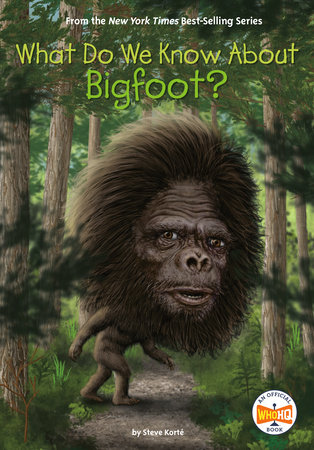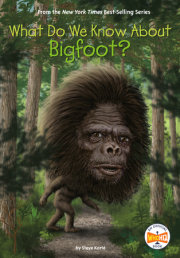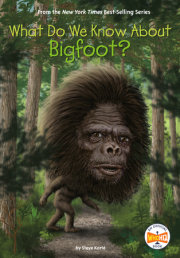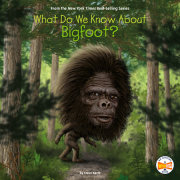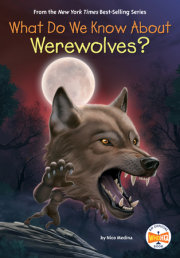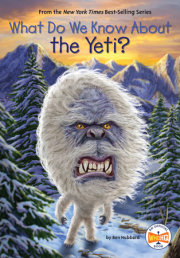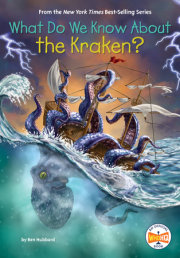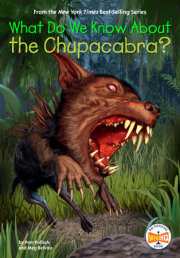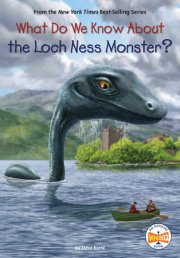What Do We Know About Bigfoot? In the summer of 2012, a woman was walking down a long, deserted road in the Hoopa Valley Tribal reservation in Northern California. It was nighttime, and she carried a flashlight so she could find her way along the dark road. Her name was Sadie McCovey, and she was about to have a disturbing experience that she would remember for the rest of her life.
An eerie suspicion overcame Sadie. She felt as if something was behind her, watching her. She was afraid it wanted to overtake her, or even to capture her. She became very scared.
Sadie turned around and pointed her flashlight behind her. Not far from her was something that appeared to be a giant human or an ape-like creature she had never seen before. It was crouching low to the ground on its two legs. Its eyes glowed green in the glare of her flashlight. Sadie screamed.
“You could see the hair spiking around its face and the body,” Sadie remembered. “As I screamed, it got up and turned around and just walked off.”
Sadie shivered for a moment at the memory of this encounter, and then she added, “I knew for sure it was Bigfoot.”
In North America, there have been many sightings of a large, powerful beast that has come to be known as Bigfoot. It walks upright and is completely covered in hair. All who have seen this strange creature insist that it is not a chimp or gorilla. It is also not human. It is something in between. Bigfoot is something that science cannot explain.
A hairy giant known as Bigfoot could not possibly be real. Or could it?
Chapter 1: Cryptids There are many things about our world that we understand through scientific study. We know why giraffes have long necks, how gravity works, and what causes earthquakes. But there are other things—-unusual, mysterious, and sometimes downright scary—-that no one has yet been able to explain. Some of these mysteries have existed for a very long time. For centuries, people from all around the world have reported seeing frightening monsters in remote locations.
The science of studying mysterious, unknown beings is called cryptozoology. “Crypto” means “hidden,” and “zoology” means the “study of animals.” A cryptid is a creature that may or may not exist. Bigfoot is just one—but perhaps the most famous—example of a cryptid. Lesser--known cryptids include the Bunyip, an Australian water beast rumored to swallow humans whole, and the Windigo, a scary zombie--like giant who lives in Canada.
Some people feel that cryptozoology is not a real science. Others, however, point to the fact that previously unknown animals are being discovered all the time. Some animals that were thought to be extinct or existed only in legend turned out to be quite real!
The Vikings told tales of a giant sea monster called the Kraken that could wrap its deadly tentacles around a ship and pull it underwater. Few modern people believed that a monster like the Kraken really existed. But in 2004, Japanese researchers photographed images of a previously undiscovered giant squid that was around twenty--six feet long! Another giant squid was later discovered that was fifty--nine feet in length and weighed almost a ton. Even bigger ones might exist in the ocean, as yet undiscovered. Could this be the Kraken?
Then there was the case of the coelacanth (say: SEEL--uh--kanth), a giant fish that could grow more than six feet long and weigh about two hundred pounds. It existed over 360 million years ago and was thought to be extinct. In 1938, however, a live coelacanth was caught off the coast of South Africa. And now we know that there are two rare species of coelacanth living in the world today.
There have been many more previously unknown creatures that were discovered in the wild and later classified by scientists. The list of such animals includes Komodo dragons, giant pandas, and gorillas.
One of the oldest cryptid mysteries is whether there are large, hairy, human-like beings living deep within wild forests.
Giant apes once lived on Earth. Scientists know this because in 1935, a German scientist named Gustav Heinrich Ralph von Koenigswald purchased a giant tooth in a Chinese drugstore. That tooth turned out to be a fossil of an extinct creature known as Gigantopithecus. These were massive beasts that lived millions of years ago in East Asia. They stood perhaps over ten feet tall and weighed five hundred pounds or more. At some point before the Gigantopithecus became extinct, scientists believe that it may have occasionally walked on two legs like humans.
But what if the Gigantopithecus didn’t die out? What if a few of them survived by hiding in remote forests or deep caves?
If Bigfoot exists, could it be a descendent of the Gigantopithecus?
Chapter 2: Wildmen The name “Bigfoot” was not introduced until the late 1950s, but for centuries before that there were many stories and sightings of a hairy, often very tall, humanlike beast. They were often described as “wildmen.” These creatures tended to live in hidden locations that made it hard for humans to find them. Stories about wildmen had been told for centuries in many countries, including China, Greece, and England. The Epic of Gilgamesh, a story written in Mesopotamia around 2000 BC, tells of a giant wildman called Enkidu who had “hair that sprouted like grain.”
Centuries ago, the people in Greece told stories featuring satyrs. These were creatures that looked like humans but also had animal body parts, such as hooves and horns.
Around the year AD 77, a Roman named Pliny the Elder published a book called Natural History. In his book, he described many monsters from around the world, including some with dog heads, horse hooves, and long, hairy tails.
Years later, a Greek historian named Arrian wrote a book about the great soldier and ruler Alexander the Great. The book told a tale of Alexander’s army battling hairy beasts near the Indus River in Asia. After a bloody fight, some of the mysterious beasts were killed, some escaped into the hills, and some were captured.
Arrian wrote, “Those captured were hairy, not only their heads but the rest of their bodies; their nails were rather like beasts’ claws.”
The origin and identity of these creatures still remains a mystery.
Then there is the long poem known as Beowulf. It was believed to be written over a thousand years ago and is one of the earliest surviving documents written in the English language. It tells the story of an oversize, hairy monster known as Grendel who battles a brave warrior named Beowulf. Grendel has powerful claws and is so strong that he can defeat dozens of men at a time. The story of Beowulf is still read and studied today, proving the lasting impression of monsters on our imaginations.
When European explorers first began exploring the world, they discovered many strange creatures that they had never seen before. One unusual discovery was a hairy manlike animal found in Southeast Asia. The Europeans gave it the name
orangutan, which means “man of the forest.” Today, we know that orangutans are great apes that live in Borneo and Sumatra.
Over the years, as more and more of the world was explored and classified, many people stopped believing in the existence of wildmen. Although our human ancestors were covered with hair, that was millions of years ago. Scientists concluded that the modern world was made up of humans and animals. Anything between those two categories no longer existed.
Or were they just waiting to be discovered?
Copyright © 2022 by Penguin Random House LLC.. All rights reserved. No part of this excerpt may be reproduced or reprinted without permission in writing from the publisher.

